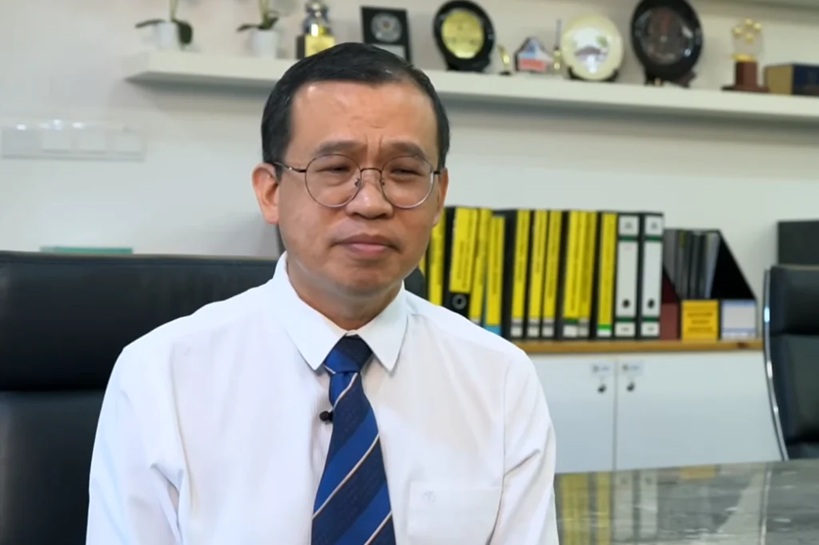In Sabah, every report card carries the weight of an entire family’s hopes.
For many families, having a child enter university—especially to study abroad, is a lifelong source of pride. Yet under the pressure of economic realities, that dream is not easily achieved. For many students, the ability to continue their studies depends not only on hard work, but also on a supportive system sustained by government policy.
A Grant That Keeps the Roof Standing
For Cheong Chan Hing, Principal of Sabah’s Chong Hwa Independent High School, the true “presence” of this system is not seen in grand building inaugurations, but in the quieter, practical efforts to keep the school running.
“Our school has been around for 60 years, and many of the buildings are old. Every year, we face leaking roofs and walls that need repainting. With the state government’s funding, our financial burden has been greatly reduced,” he said.

Since 1986, the Sabah government has consistently allocated annual grants to Chinese primary schools, independent Chinese secondary schools, and non-Muslim religious organizations. This policy has never been interrupted, continuing steadily for nearly four decades. According to the Political Secretary to the Chief Minister, Jason Yee Ming Sheng, this initiative began under the rule of Parti Bersatu Sabah (PBS) in 1986 and has been maintained ever since.
“When PBS came into power, it introduced special grants for non-Muslim religious groups, Chinese schools, and independent Chinese schools. In 2021, the GRS government carried on this tradition and increased the annual allocation by around 10%, aligning with the state’s goal to strengthen human capital,” he explained. The key, Yee emphasized, lies in fairness.
“This policy isn’t exclusive to any single ethnic group—it covers everyone. Sabah’s population is roughly 50% Muslim Bumiputera, 30% non-Muslim Bumiputera, and 20% Chinese. Building human capital means giving equal opportunity to all, regardless of race or religion.”
Policy Continuity for Shared Educational Growth
Statistics show a steady rise in the state’s education funding over the years: RM42 million in 2021, RM47 million in 2022, RM54 million in 2023, RM56 million in 2024, and an expected RM70 million in 2025, climbing to RM90 million in 2026. The average annual growth of about 10% demonstrates the Sabah government’s long-term commitment to education. Cheong said that while the amount may not be massive, its impact is profound.

“We’re fortunate—Sabah adopted this fixed grant system earlier than other states. The sum isn’t huge, but the key is consistency. When you can count on it every year, you can plan,” he noted.
This institutionalized support, he added, gives schools stability, helping them maintain teaching quality and giving teachers and students a tangible sense of the government’s commitment to education.

A Scholarship, A Second Chance
In the world of students, grades remain the only ticket to opportunity. For many in Sabah, the “Top 10 Scholarship” offered by Yayasan Sabah represents a doorway to a brighter future.
“This scholarship has existed for more than 30 years,” said Cheong. “Even when I was a student some 35 years ago, the Top 10 Scholarship was already there. It’s a tradition that continues today. Students know what they’re working for—if they perform well, they have a real chance.”

What’s more, the system is entirely open and fair.
“Last year, one of our Bumiputera students received the award under the open category. The Top 10 really is open to all, regardless of race. That’s something the Sabah government deserves credit for,” he said.
Cheong added that scholarships are not just financial assistance—they’re recognition. “For some, it’s what enables them to pursue higher education overseas and complete their studies. For these students, it’s not just support—it’s motivation and pride.”
Bridging the Urban-Rural Divide
Despite these encouraging policies, challenges remain. Cheong believes that as global education evolves, Sabah too must plan for the long term. “Education shouldn’t be built on short-term or stopgap measures. The government should continue to attract professional educators and implement lasting strategies,” he said.

Yee echoed this view, acknowledging that more resources from the federal level are needed. “In urban areas, many classrooms are overcrowded with 50 to 60 students, ideally it should be around 35 to 40. In rural areas, some schools still have wooden buildings and rough, unpaved roads. The federal government must strengthen support for these basic infrastructures,” he said.
Education: The Gentlest Form of Nation-Building
A grant can fix a leaking roof. A scholarship can change a life.
In Sabah, education has never been just about schools, it’s a collective mission to nurture hope.
Here, education is a long journey. Its true meaning lies not in grades or rankings, but in ensuring that every child, whether from a bustling city or a quiet village—has the opportunity to write their own future on the same report card.
VOICE OF ASIA Editorial Note
At VOICE OF ASIA, we believe in amplifying the real voices of the people – especially those too often overlooked in national discourse. This translated article, originally published by Sin Chew, highlights a perspective from Sabah that resonates with our editorial mission: to go beyond headlines and politics, and shine a light on what truly matters to everyday Malaysians.
The original version can be found here.



